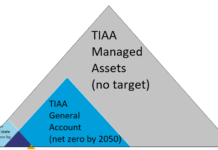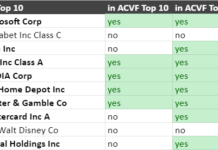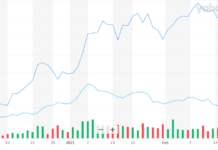Tom Konrad CFA
Three green stock specialists see individual stocks at attractive values, but think it’s too soon to call the bottom for the sector as a whole.
Last month, I wrote that I’m again finding clean energy stocks that I think are bargains, and listed ten. I was not ready to call a bottom for clean energy, and in fact said I expected the market to get worse before it gets better, so investors should keep some money on the sidelines to wait for more opportunities to emerge.
In a little over a month since then (June 16 to July 18,) those stocks are up, on average, by 5.6% in dollar terms, while the largest clean energy ETF, the PowerShares Wilderhill Clean Energy Portfolio (PBW) is down 1.5% over the same period. The top performer has been Alterra Power (MGMXF.PK), which is up 24% and the biggest loser has been Ambient (ABTG.OB), which is down 10%. It’s far too soon to declare victory, and I continue to feel all those stocks are cheap today, and that there is plenty of room on the downside for clean energy as a whole.
But given that I can only follow a small fraction of the hundreds of clean energy stocks out there, I thought it would be interesting to see if other money managers who specialize in clean energy see the current market the same way I do, and what bargains they are finding, in the spirit of my article looking at clean energy money manager’s top picks in the wake of the Fukushima disaster. I intend to continue to do articles like this one based on other money managers’ views, so if you are a professional money manager or analyst specializing in green stocks and would like to participate in the future, send me an email and I’ll add you to my list. You can also reply to the questions here by leaving your comments at the bottom.
This article is the first of a two part series looking into what they had to say. This first article is about where they see the clean energy sector as a whole, and the second one will take a look at their picks.
I corresponded with three money managers for this article.
- Rafael Coven manages the Cleantech Index (^CTIUS), which is the index behind the Powershares Cleantech Portfolio ETF (AMEX: PZD.) According to Bloomberg New Energy Finance, PZD was the top performing clean energy fund in 2010, and Rafael tells me that PZD has been number one again in the first half of 2011.
- Garvin Jabusch is a cofounder of Green Alpha Advisors, LLC and manages The Sierra Club Green Alpha Portfolio. He’s also a popular contributor to this site, with articles on Wall Street’s Irrational, Dangerous Hatred of Solar Stocks and Saudi Arabia Becoming the Saudi Arabia of Solar Electricity.
- Sam Healey manages a portfolio of cleantech stocks at Lamassu Capital. I first started talking to him about cleantech stocks when he brought water efficiency play Pure Technologies(PUR.V) to my attention is early 2010.
Sector and Market Outlook
All three agree that it’s too early to call a bottom. They raise two basic concerns.
First, it’s simply very difficult to ever time the market. As Jabusch puts it, “Even when industries become very undervalued, they can remain stubbornly low for some time,” while Coven finds it hard to say due to “volatile overall market conditions.”
Coven went on to say “The correlation with global equity markets is still the [strongest driver] of stock performance and I certainly don’t think that global markets have bottomed nor are cleantech stocks as a whole independent from overall macro economic conditions.”
I think Coven’s latter comment is interesting because we really have not seen a lot of correlation between the overall market and clean energy over the last couple years, with clean energy trending flat to down even as the market as a whole has risen. If the overall market heads down from here, will clean energy stocks follow suit, or will they remain mostly decoupled? I’m inclined to agree with Coven, which is why I have been focusing my picks on small and microcap stocks. Recent research has shown that portfolios of small and microcap stocks have been better behaved during broad market declines than larger capitalization stocks, so I hope my move towards smaller stocks will somewhat insulate me from an overall market decline.
Healey echoes Coven’s concerns about how the larger economic picture might affect cleantech. He said many cleantech subsectors “have revenue generation that is tied in one way or another to government spending/incentives. Until investors have better clarity as to what the government spending/incentive picture will look like after the European debt Crisis and US deficit plans have been worked out I can not confidently say any equity that benefits from government actions, either policy or financial incentives, has bottomed.”
Finding Value
Despite the cautious tone, all three seem enthusiastic about the values now available in specific stocks and subsectors.
Jabusch said, “we do believe that just as surely as all bubbles must eventually burst, all unreasonably oversold stocks must some time come back to their fair valuation. By “fair valuation” we mean at least to the old-school Benjamin Graham definition of net present value of the probable future stream of cash flows discounted at a reasonable rate, plus the property plant and equipment. We understand that this valuation method seems very conservative and even quaint by current thinking, but surprisingly, there are a lot of cleantech companies that look very cheap right now, even against this standard.”
Coven went into more detail about how he would pick stocks in the current climate.
We are also much more comfortable with well-capitalized companies, with broad product lines and strongly prefer those that can flourish with diminished government incentives which are bound to fall further. This of course has us steering clear of all fuel cell and most biofuel companies for the moment.
We continually are reminded how fast certain sectors have product commoditization. Where intellectual property isn’t strong enough to differen
tiate products sufficiently, prices have been collapsing even faster that we had anticipated. This is true for smart power meters, solar panels, wind turbines, and most lighting products – especially LEDs. The LED market is going to be massive, but the number of new entrants and (particularly in China) and increased production capacity (mostly in China) has grown so much faster than demand, that prices are falling faster than they did for solar panels. This will be good for adoption, but the LED market for general illumination (non-consumer electronics) is still nascent and won’t really takeoff until LED prices drop further. Sector growth doesn’t necessarily mean that many companies will make economic profits in LED lighting or solar PV, but probably those with really great I.P. or the lowest cost manufacturing will. The rest will die or struggle to survive.
Stock Picking Guidelines
Which clean energy stocks will
- have strong intellectual property or other advantages that help them avoid commoditization of their products,
- have great net present value of future cash streams, and
- aren’t tied to government spending/incentives?
Stay tuned for these three managers’ stock picks later this week.
DISCLOSURE: Long MGMXF.PK, ABTG.
DISCLAIMER: Past performance is not a guarantee or a reliable indicator of future results. This article contains the current opinions of the author and such opinions are subject to change without notice. This article has been distributed for informational purposes only. Forecasts, estimates, and certain information contained herein should not be considered as investment advice or a recommendation of any particular security, strategy or investment product. Information contained herein has been obtained from sources believed to be reliable, but not guaranteed.








